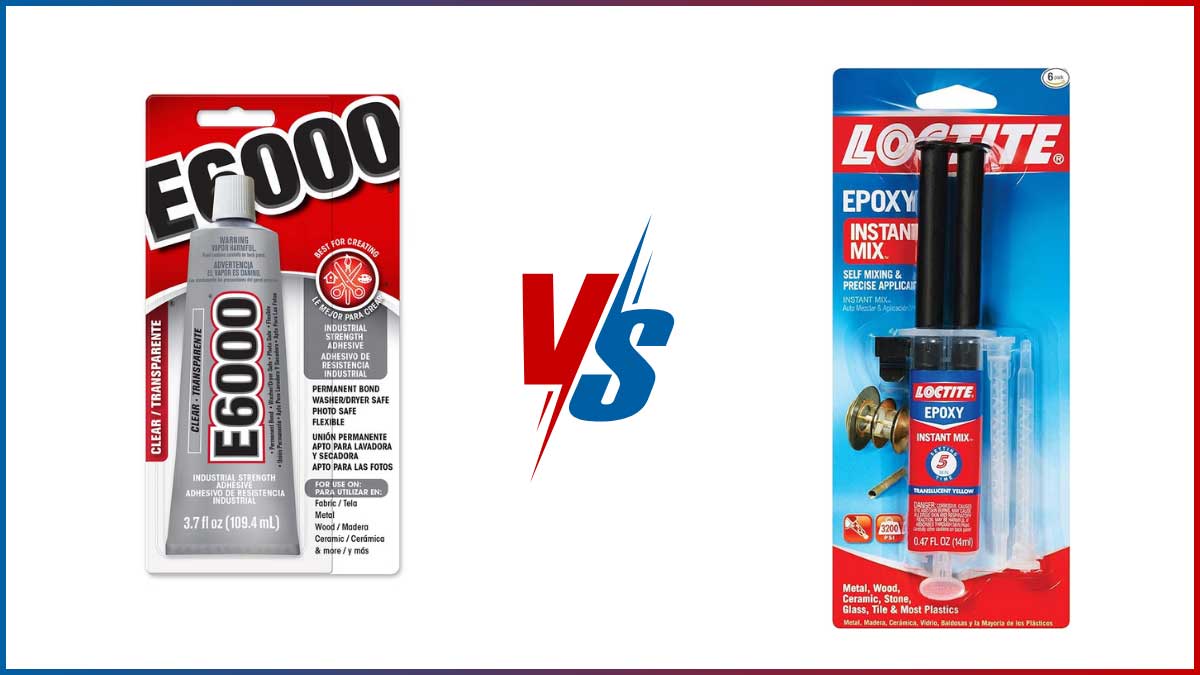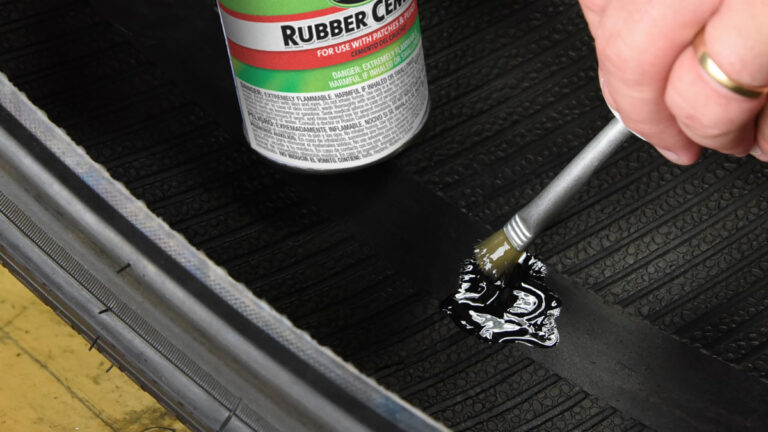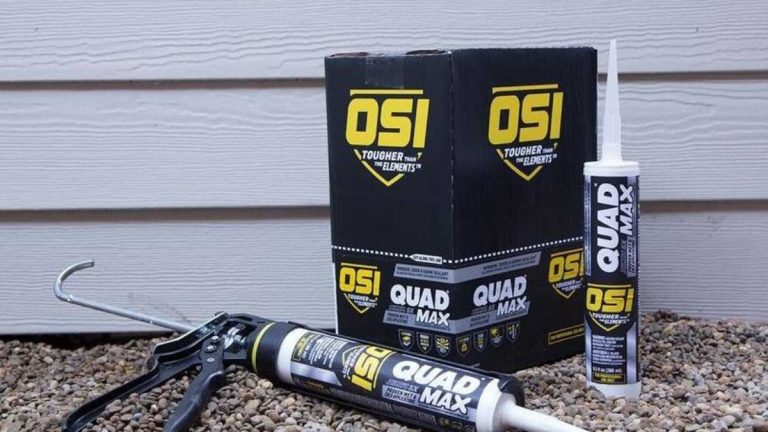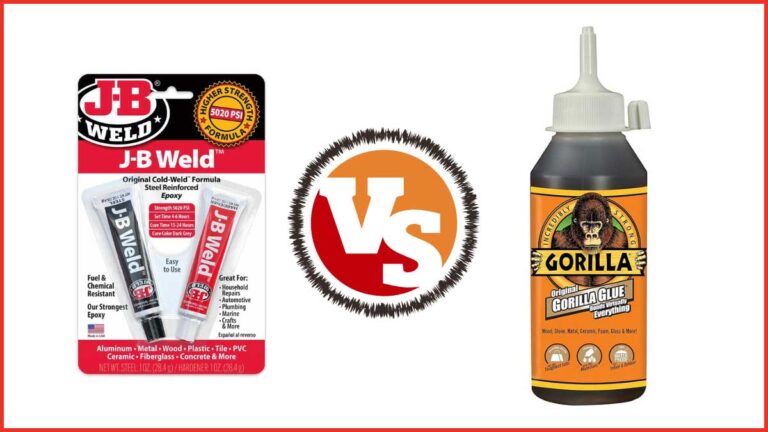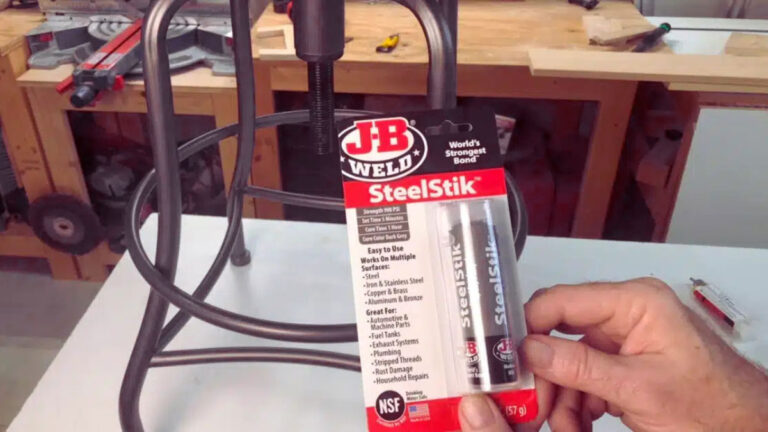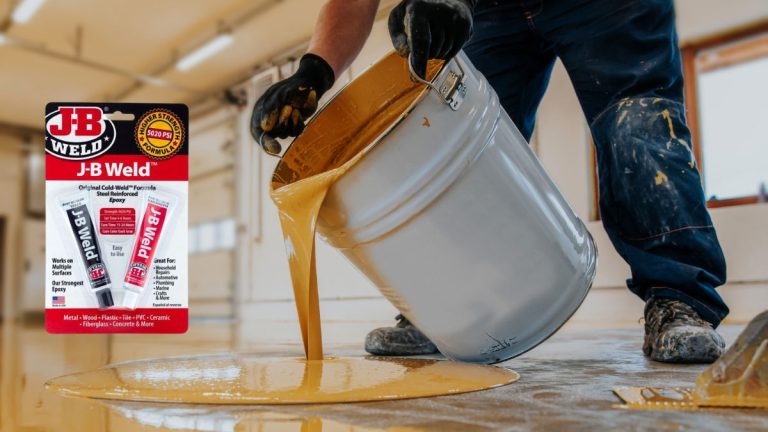E6000 vs Epoxy: Which Adhesive is Best for Your Project?
When it comes to tackling DIY projects or repairs, choosing the right adhesive can make all the difference. You might find yourself torn between two popular options: E6000 and epoxy. Both have their strengths, but which one suits your needs best?
In this text, you’ll discover the key differences between E6000 and epoxy, helping you make an well-informed choice. Whether you’re fixing a broken item, crafting, or working on a larger project, understanding these adhesives’ unique properties will ensure your work holds up over time. Let’s jump into the essentials so you can pick the perfect adhesive for your next project.
Key Takeaways
- E6000 vs. Epoxy: E6000 is a flexible adhesive ideal for crafting, while epoxy offers superior strength for structural and industrial applications.
- Adhesive Properties: E6000 retains flexibility and is versatile across multiple materials, whereas epoxy forms a rigid, durable bond and is suitable for heavy-duty use.
- Application Methods: E6000 is applied directly from a tube and cures within 72 hours. Epoxy requires precise mixing of resin and hardener, typically taking longer to cure.
- Common Uses: E6000 excels in crafting, jewelry, and flexible bonding needs. Epoxy is best for high-strength repairs and industrial purposes.
- Safety Considerations: Proper ventilation and personal protective equipment are essential when using both adhesives. Each requires specific surface preparation and handling protocols for best results.
Understanding E6000 and Epoxy
When choosing the right adhesive for your project, knowing the differences between E6000 and epoxy is essential. Each adhesive offers unique properties, making them better suited for different applications.
What is E6000?
E6000 is a versatile adhesive known for its strong, permanent bond and flexibility. It’s suitable for various materials and comes in different formulations.
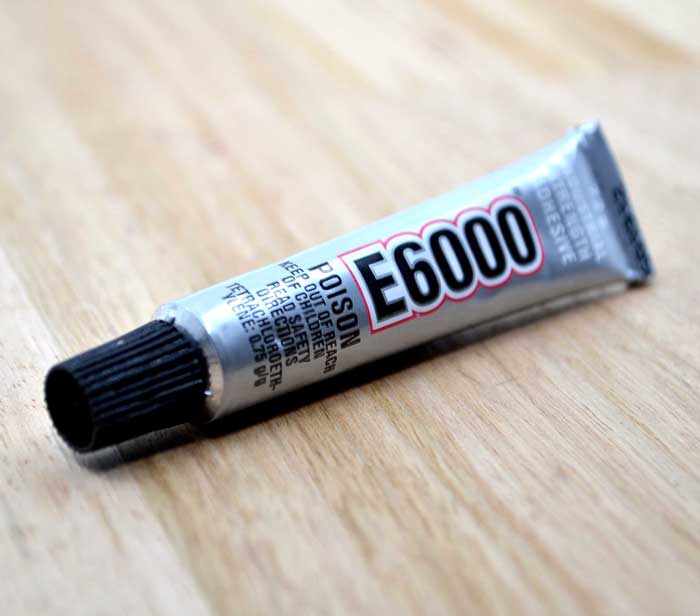
Key Properties of E6000
- Adhesion: Adheres strongly to wood, metal, glass, fiberglass, ceramics, masonry, concrete, leather, and rubber.
- Flexibility: Retains flexibility after curing, reducing the risk of cracking or breaking under stress.
- Variations: Available in high-viscosity, medium-viscosity, UV-resistant, and specialized versions such as Fabri-Fuse for fabric and a version for jewelry and beads.
- Applications: Accessible in tubes, cartridges, and spray forms, each suited for specific tasks like crafts and repairs.
What is Epoxy?
Epoxy is a two-part adhesive consisting of resin and hardener. It’s known for its strong bonding capabilities and rigid finish.
- Adhesion: Bonds well to a wide range of materials like wood, metal, ceramics, and plastics.
- Strength: Provides a high-strength, durable bond that is resistant to environmental factors such as moisture and chemicals.
- Curing Time: Requires precise mixing and longer curing times, but results in a rigid, permanent bond.
- Uses: Commonly used in heavy-duty applications like repairing structural components, waterproofing, and electrical encapsulation.
These adhesives serve distinct purposes and selecting the right one depends on the requirements of your specific project.
Key Differences Between E6000 and Epoxy
When choosing between E6000 and epoxy for your projects, understanding their differences ensures you make an well-informed choice. This section outlines critical distinctions in chemical composition, application methods, and strength and durability.
Chemical Composition
- E6000: A flexible adhesive with a less solvent-based and more adhesive-based nature. Its thicker viscosity provides flexibility and resistance to environmental conditions.
- Epoxy: A two-part adhesive comprising resin and hardener. When mixed, it forms a rigid, durable bond ideal for high-strength applications.
Application Methods
- E6000:
- Application: Directly from the tube or cartridge.
- Preparation: Requires a clean, dry, and lightly roughened surface.
- Temperature Range: Ideal from 50 to 90 °F (10 to 32 °C).
- Curing Time: Takes 24 hours to cure, with full bond strength in 72 hours.
- Epoxy:
- Application: Mix resin and hardener in the correct ratio before applying.
- Preparation: Needs precise mixing for optimal results.
- Temperature Range: Generally flexible but varies by formulation.
- Curing Time: Typically longer than E6000, varying by product.
- E6000: Known for flexibility and resilience under various conditions. Bonds well to materials like wood, metal, and glass, making it versatile for multiple applications.
- Epoxy: Offers superior strength and a rigid, durable finish. Suitable for structural applications requiring high strength and resistance to environmental factors.
Common Uses and Projects
Selecting the right adhesive ensures your DIY project or repair is successful. Both E6000 and epoxy serve distinct purposes, making it essential to understand their applications.
When to Use E6000
- Flexible and Versatile: E6000 delivers a robust yet flexible bond, ideal for materials needing some give. It’s popular for metal, glass, ceramics, concrete, and plastic.
- Crafting and Jewelry: Its adaptability to various materials, including textiles and leather, makes E6000 a favorite among crafters and jewelers.
- Rhinestoning and Decorative Projects: For rhinestone applications and other decorative endeavors, E6000’s durable flexibility withstands stresses without breaking the bond.
When to Use Epoxy
- High Strength and Rigidity: Epoxy bonds materials requiring high strength and minimal flexibility. It’s perfect for metal, glass, and other rigid substances.
- Structural Repairs: Its rigidity suits structural repairs where sturdiness matters more than flexibility.
- Industrial Applications: Epoxy’s robust nature makes it a go-to for industrial projects, providing durable and resistant bonds.
Key Terms
E6000: A flexible adhesive known for its versatility.
Epoxy: A rigid, high-strength adhesive ideal for sturdy applications.
| Feature | E6000 | Epoxy |
|---|---|---|
| Bond Strength | Strong, flexible | High, rigid |
| Common Materials | Metal, glass, ceramics, plastic | Metal, glass, rigid substances |
| Crafting and Jewelry Use | Excellent | Not suitable |
| Structural Repairs | Limited | Excellent |
| Industrial Applications | Moderate | Excellent |
| Curing Process | 24 hours to bond, 72 hours to cure | Longer curing time |
| Ease of Use | Tube application | Requires mixing |
Choose E6000 when dealing with projects that need flexibility and versatility, especially in crafting or decorative tasks. If your project involves structural repairs or industrial applications requiring a firm bond, opt for epoxy. Understanding when to use each adhesive ensures successful outcomes for your DIY projects.
Pros and Cons
When choosing between E6000 and epoxy for your projects, it’s crucial to weigh their advantages and disadvantages. This ensures you select the adhesive that best meets the specific demands of your task, whether it’s flexibility, strength, or quick curing. Below, you’ll find a detailed comparison of the pros and cons of E6000 and epoxy.
Pros of E6000
- Flexibility: E6000’s flexibility stands out. This adhesive remains elastic after curing, absorbing shocks and preventing breakage, making it ideal for projects exposed to stress or movement.
- Waterproof: Its waterproof properties make E6000 suitable for use in moisture-prone areas. Use it confidently in both indoor and outdoor projects without worrying about water damage.
- Archival Quality: E6000 doesn’t degrade over time, which ensures long-term durability. This makes it perfect for materials you want to preserve for extended periods.
- Variety of Colors and Nozzles: Available in transparent, white, and black colors, E6000 matches your project’s aesthetic needs. Different nozzle sizes allow precise application, catering to various crafting requirements.
- Strong Adhesion: Though it takes up to 72 hours to fully cure, E6000 offers robust adhesive strength once set. This ensures a strong, lasting bond across different materials.
Cons of E6000
- Curing Time: One significant drawback is the long curing time. Projects can experience delays since E6000 takes approximately 72 hours to fully cure.
- Fumes: E6000 emits strong fumes during application, requiring good ventilation. Consider working in open or well-ventilated areas to avoid inhaling these fumes.
Pros of Epoxy
- High Strength: Epoxy provides exceptional bonding strength, making it ideal for heavy-duty and industrial applications. This adhesive can handle high-stress environments.
- Durability: Epoxy bonds are highly durable and resistant to environmental factors, including temperature changes and chemicals. This durability makes epoxy suitable for outdoor projects and harsh conditions.
- Versatility: Suitable for a wide range of materials, epoxy works well with wood, metal, plastic, and more. Its versatility makes it a go-to for many types of repairs and construction.
- Fast Curing Options: Some epoxy formulations offer faster curing times. For projects with tight deadlines, these options can significantly speed up completion.
Cons of Epoxy
- Precise Mixing: Epoxy requires precise mixing of resin and hardener for effective bonding. Inaccurate ratios can compromise adhesive strength.
- Rigidity: Epoxy forms a rigid bond, which may not be suitable for projects needing flexibility. The adhesive can crack under stress or movement.
- Application Complexity: The epoxy application process can be complex and messy. It involves mixing components, which adds an extra step compared to single-part adhesives like E6000.
| Property | E6000 | Epoxy |
|---|---|---|
| Flexibility | High | Low |
| Waterproof | Yes | Yes |
| Curing Time | Up to 72 hours | Varies (usually longer) |
| Strength | Strong | Very Strong |
| Durability | High | Very High |
| Application | Directly from tube | Requires mixing |
| Uses | Crafting, jewelry, decor | Structural, industrial |
Choosing the right adhesive hinges on your project’s specific needs. Understanding the strengths and limitations of E6000 and epoxy will help you make an well-informed choice, ensuring your project’s success.
Safety Considerations
Carefully considering safety when using adhesives like E6000 and epoxy is essential. Both products have specific guidelines to ensure safe usage and optimal results.
E6000 Safety
Application and Surface Preparation:
- Ensure the surface is clean, dry, and free of dirt. Lightly roughen the surface for best results.
- Apply in temperatures between 50°F and 90°F (10°C to 32°C).
Curing and Drying:
- Allow 24 hours for initial curing, achieving maximum bond strength in up to 72 hours.
- Avoid exposure to finished surfaces until completely dry to prevent damage.
Clean-Up:
- Clean uncured adhesive with acetone, citrus-based solvents, or rubbing alcohol.
- Remove cured material with mineral spirits or by cutting and scraping.
Substrate Compatibility:
- Not recommended for use on polystyrene, polyethylene, polypropylene, Styrofoam™, or paper products.
- Excellent adhesion to wood, glass, fabric, ceramic, gems, metals, marble, fiberglass, concrete, and most plastics.
Epoxy Safety
Mixing and Application:
- Mix according to manufacturer’s instructions using the correct resin-to-hardener ratio.
- Apply in a well-ventilated area to minimize inhaling fumes and ensure proper curing.
Curing Time and Conditions:
- Curing time varies; typically ranges from several hours to a few days.
- Maintain recommended temperature and humidity levels during curing.
Clean-Up:
- Clean tools and surfaces with acetone or appropriate solvent before the epoxy hardens.
- Remove uncured epoxy with vinegar or citrus-based solvents.
Substrate Compatibility:
- Bonds well with wood, metal, glass, ceramics, and most plastics.
- Not suited for flexible materials, due to its rigid finish.
Personal Protective Equipment (PPE):
- Wear gloves, safety goggles, and a mask to protect against fumes and skin contact.
- Ensure adequate ventilation, using fans or open windows if necessary.
| Safety Aspect | E6000 | Epoxy |
|---|---|---|
| Application Temp Range | 50°F to 90°F (10°C to 32°C) | As per manufacturer’s guidelines |
| Handling Time | Initial cure in 24 hours, full in 72 hours | Varies: several hours to days |
| Clean-Up Uncured | Acetone, citrus-based solvents, rubbing alcohol | Acetone, vinegar, citrus-based solvents |
| Clean-Up Cured | Mineral spirits, cutting, scraping | Usually can’t be removed once cured |
| Substrate Compatibility | Wood, glass, fabrics, ceramics, metals, etc. | Wood, metals, ceramics, most plastics, etc. |
| PPE Requirements | None specified | Gloves, safety goggles, mask, proper ventilation |
Understanding these safety considerations helps ensure the effective and safe use of each adhesive.
Conclusion
Choosing the right adhesive boils down to understanding your project’s specific needs. E6000 offers flexibility and versatility, making it perfect for crafting and decorative tasks. Its strong, permanent bond and adaptability to various materials make it a go-to for many DIY enthusiasts.
On the other hand, epoxy provides a high-strength, durable bond ideal for structural repairs and industrial applications. Its rigid finish and resistance to environmental factors make it indispensable for heavy-duty projects.
By considering the strengths, limitations, and safety protocols of each adhesive, you’ll be well-equipped to select the best option for your needs. Whether you opt for E6000 or epoxy, knowing their properties ensures your project’s success.
Frequently Asked Questions
What materials are best suited for E6000?
E6000 is ideal for bonding materials like wood, metal, glass, ceramics, and some plastics. It is especially popular for crafting, jewelry making, and decorative projects due to its strong, flexible, and waterproof bond.
How long does E6000 take to cure completely?
E6000 typically cures in about 24 hours, with full bond strength achieved within 72 hours. However, for initial bonding strength, it takes approximately 4-8 hours.
Is epoxy stronger than E6000?
Yes, epoxy is generally stronger and more rigid than E6000. Epoxy provides a high-strength, durable bond that is resistant to environmental factors, making it suitable for structural repairs and industrial applications.
Can E6000 be used outdoors?
Yes, E6000 is waterproof and can be used for outdoor applications. Its flexibility and resistance to environmental conditions make it suitable for various outdoor projects.
What safety measures should be taken when using E6000?
Always work in a well-ventilated area, wear gloves, and avoid direct contact with skin and eyes. Ensure the surface is clean and dry before application, and allow adequate curing time to ensure a strong bond.
How do you mix epoxy adhesive?
Epoxy comes in two parts: resin and hardener. Mix them in equal parts, following the manufacturer’s instructions. Stir thoroughly until the mixture is consistent before applying it to the surface.
What should you not use E6000 on?
Avoid using E6000 on polyethylene, polypropylene, or Styrofoam. Also, ensure it does not come in contact with your eyes or skin for prolonged periods, and do not ingest the adhesive.
Does E6000 glue yellow over time?
No, E6000 glue does not yellow over time, maintaining the appearance of the bonded items and making it suitable for long-term projects, especially in jewelry making.
What projects is epoxy best used for?
Epoxy is best for structural repairs, heavy-duty bonding, and industrial applications requiring high strength and minimal flexibility. It is also great for applications exposed to extreme environmental conditions.
Are there fast-curing epoxy options available?
Yes, some epoxy formulations are designed to cure quickly. However, most types require precise mixing and longer curing times to achieve maximum bond strength and durability.

